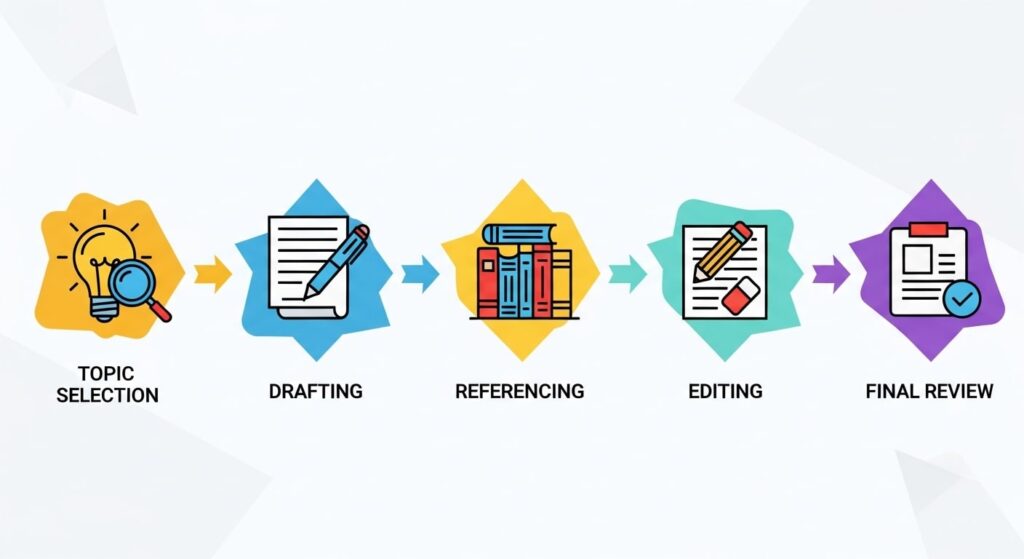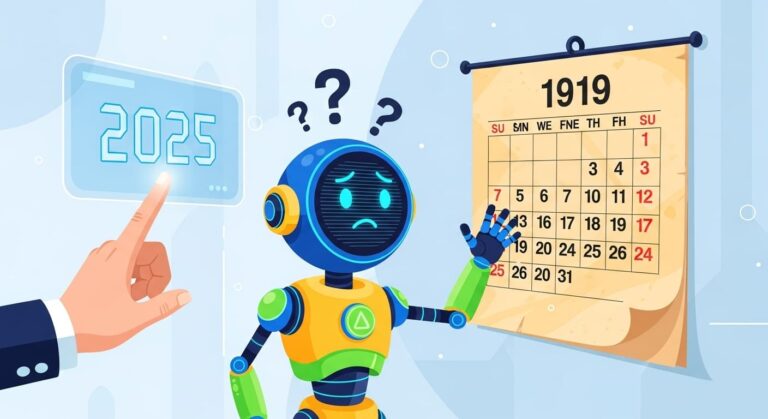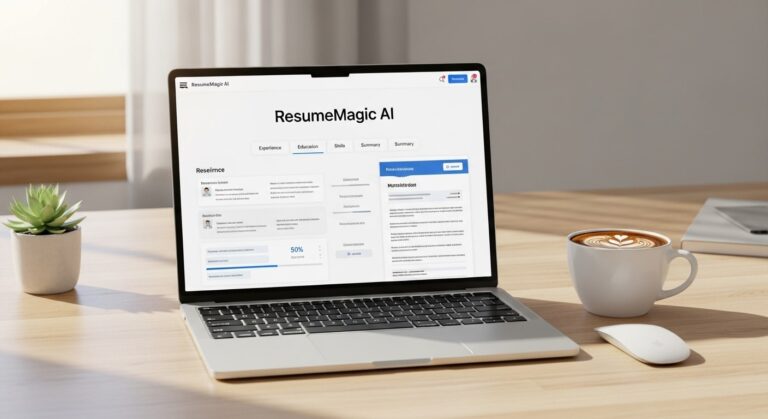Artificial intelligence is changing the way people create content. It now writes emails, blogs, code and even poetry. The next question people often ask is simple yet powerful: can Alpaslan AI paper? In other words, can an AI like Alpaslan write a full academic research paper on its own?
The idea sounds exciting. A system that can think, write and organize ideas like a human researcher could save time and remove effort from long writing tasks. But can an AI truly understand research, logic and creativity the way humans do? This blog explains that idea in simple words. We will see what Alpaslan AI is, how it writes, where it works well, where it fails and how it can support human researchers instead of replacing them.

What Is Alpaslan AI
Alpaslan AI is an advanced artificial intelligence model made to understand and generate human language. Like other large language models, it can answer questions, create content and write structured text in a clear style. Its main strength is natural language processing which means it can read and respond in fluent language rather than in code.
Many people use AI tools like Alpaslan to help with essays, business writing and even technical papers. It reads thousands of research examples and learns how sentences and ideas connect. When you ask it to write about a topic it uses that learning to predict the next most logical words and create readable content.
However, what makes Alpaslan AI special is its balance between technical accuracy and natural writing flow. It can explain deep concepts without using complex terms which makes it a good companion for researchers who want to simplify difficult topics.
Can Alpaslan AI Really Write a Paper
The question sounds simple but the answer depends on what we mean by “write a paper.”
If writing means creating a grammatically correct, well-structured draft then yes Alpaslan AI can write a paper. It can organize ideas, summarize research and create arguments that sound natural.
But if writing means doing original research, performing experiments, collecting data and drawing unique conclusions then no AI can truly do that on its own. AI can only use the data it has already seen. It cannot perform a new experiment or create real-world evidence.
So in truth, Alpaslan AI can help write a paper but it cannot be the author of original scientific discovery. It acts as a more powerful assistant than a scientist.
How AI Learns to Write Like Humans
To understand why Alpaslan AI writes well, it helps to know how it learns. AI models learn from massive amounts of text books, websites, journals and conversations. The model looks for patterns in how words and ideas connect.
It does not memorize text but instead learns structure. For example, when writing an introduction it notices that humans often start with a question or general idea before narrowing down to the main topic.
With millions of examples, Alpaslan AI becomes skilled at building similar patterns. That is how it produces sentences that sound natural and logical.
Examples of AI-Generated Research
AI tools have already been used in academic writing. Some researchers have asked AI to help write abstracts or literature reviews. A few papers on arXiv even mentioned AI assistance in the writing stage.
These experiments show that AI can help with wording and structure but final editing still needs human judgment. Universities and publishers now discuss how to list AI as a helper in academic work while keeping authorship for humans.
How Alpaslan AI Writes a Paper Step by Step
To understand the can alpaslan ai paper process better, let’s look at how Alpaslan AI would write a research paper with human guidance.
- Topic selection – The user gives a topic such as “impact of AI on education.
- Outline creation – Alpaslan AI builds a logical structure with headings and subheadings.
- Draft writing – It expands each section into readable paragraphs.
- Reference suggestion – It mentions sources or prompts where citations should go.
- Editing – The user reviews and refines tone, facts and references.
Comparison Table: Human vs AI-Written Paper
| Aspect | Human-Written Paper | AI-Written Paper |
| Creativity | Original ideas and personal style | Based on learned patterns |
| Accuracy | Depends on research and sources | Depends on training data |
| Speed | Slow but thoughtful | Very fast |
| Emotion | Natural and expressive | Neutral and formal |
| Citation quality | Verified by author | Needs manual checking |
| Final quality | High with effort | High with supervision |
The table shows why many researchers now combine both AI for speed and structure, humans for creativity and correctness.

Benefits of Using Alpaslan AI for Research Writing
Using Alpaslan AI has many clear benefits when handled carefully.
- Time saving – It drafts paragraphs quickly and frees researchers to focus on analysis.
- Better structure – It keeps the paper organized and readable.
- Clear language – It explains complex topics in simple words.
- Grammar accuracy – It removes errors that distract readers.
- Idea generation – It helps overcome writer’s block by suggesting new angles.
These features make AI writing tools very useful for students and professionals who struggle with large volumes of text.
Why Human Oversight Is Still Needed
Even with all its strengths, AI cannot think critically. It does not understand meaning the way humans do.
A human researcher checks if the information is true, relevant and ethical. AI can make confident statements that are not fully correct. That is why final editing should always be done by a person who knows the subject well.
Human review adds depth, logic and empathy that AI cannot feel. It ensures the paper is not only well written but also honest and meaningful.
Common Myths About AI-Generated Papers
AI writing is surrounded by confusion. Here are a few myths worth clearing up.
- Myth 1: AI steals content.
AI does not copy specific text rather It learns from patterns in large datasets and creates new sentences. - Myth 2: AI can replace researchers.
AI can support but not replace human thought. True research requires creativity, emotion and curiosity. - Myth 3: AI always produces wrong facts.
While AI can make mistakes, proper supervision and fact-checking can make its work highly accurate. - Myth 4: AI will make education meaningless.
In truth AI tools encourage better understanding when used responsibly. They act as learning aids rather than shortcuts.
The Role of AI in Academic Research
AI is not only for writing. It now plays several roles in the research process. Together these roles make AI a powerful partner in modern academic work.
- Data analysis – AI can study huge datasets in seconds and find patterns faster than humans.
- Language simplification – It rewrites dense academic text into easier language.
- Idea expansion – It suggests new research directions based on existing literature.
- Formatting – It automates style checks, citation formatting and structure.
How Universities Are Adapting to AI Tools
Universities now update their policies to manage AI use. Many allow AI as long as students declare it. Others create strict rules about when and how it can be used.
AI detection tools have also become common. They help professors check whether a paper is fully human or AI assisted. Instead of banning AI entirely, more schools now teach how to use it ethically.
This shift shows that AI is here to stay and learning how to use it wisely is better than ignoring it.
Ethical and Legal Issues of AI-Written Papers
The biggest concerns around AI writing are ethics and ownership.
- Plagiarism risk – AI text must be checked to avoid unintentional copying.
- Citation errors – AI might create references that sound real but do not exist.
- Authorship – Only humans can claim authorship because AI cannot take responsibility for content.
- Data use – AI should not include sensitive or private data in its writing.
To use can alpaslan ai paper safely, writers must always review, verify and cite properly. AI should assist, not replace, genuine academic work.

How to Use Alpaslan AI Responsibly
Using AI responsibly means treating it as a helper, not as the main author. Here is a simple guide. This workflow keeps both productivity and integrity intact.
- Choose a topic and gather real sources first.
- Ask Alpaslan AI to draft or summarize sections.
- Check all information for accuracy.
- Rewrite in your own voice where possible.
- Add correct citations and credits.
- Proofread the final work for tone and logic.
Future of AI-Generated Research Papers
The future will likely include AI as a writing partner. Instead of banning it, academics will learn to combine human reasoning with AI precision.
We may soon see research papers with both human and AI listed as contributors where AI helps with structure and formatting while humans provide core insights.
AI systems like Alpaslan will become more advanced and context aware. They will handle citations correctly, understand ethics better and learn to explain reasoning more transparently.
But even then, human creativity will stay central. AI can write but it cannot feel the joy of discovery or the curiosity that drives real research.
Key Takeaway
Alpaslan AI can write a paper but it cannot replace the human behind it. It creates strong drafts, helps organize ideas and saves time. Still it needs a thinking human to verify, interpret and finalize the work.
If you use it wisely, it becomes a creative partner that turns long research processes into smooth experiences. If you depend on it blindly, it can spread mistakes or shallow ideas.
Conclusion
So, can Alpaslan AI paper? The honest answer is yes, it can write a paper but only when guided by a human. It can prepare outlines, summaries and full drafts that look professional and easy to read. Yet the depth, originality and emotion behind good research still belong to people.
AI is not replacing researchers but helping them move faster. It gives structure to thoughts, clarity to writing and confidence to those who struggle with language.
In the near future, every researcher will likely work with an AI partner like Alpaslan. The line between human and machine writing will blur, but quality will still depend on human integrity.
Use it as a tool, not as a shortcut. Let Alpaslan AI handle the structure and language, while you keep the soul of the paper alive.
Can I submit an AI-written paper to a journal?
Most journals now require disclosure if AI helped in writing. Full AI authorship is not accepted because AI cannot take responsibility for content.
How can teachers detect AI-written research papers?
They use AI detection tools or check writing style and factual consistency. Sudden changes in tone or logic often indicate AI use.
Can AI like Alpaslan generate accurate references?
Not always. AI sometimes creates fake or incomplete citations. Always verify every reference manually.
Is using Alpaslan AI for thesis writing allowed?
Many universities allow AI for grammar or outline help but not for writing full sections. Check your school’s policy first
How can I make my AI-assisted paper sound more human?
Add your own experiences, examples and reasoning. Personal touches make any writing natural.
Does AI understand the meaning of research?
AI understands patterns, not meaning. It predicts what comes next in text but does not grasp real-world logic.
Can AI tools like Alpaslan help with peer review?
Yes, they can summarize and check clarity but final review decisions must come from human experts.
What are the risks of using AI for academic writing?
The main risks are factual mistakes, missing citations and plagiarism issues if not reviewed.
How can I balance AI help with originality?
Use AI for support but ensure that ideas, data and analysis come from you. That keeps your paper authentic.
Will AI replace academic writers in the future?
AI will assist but not replace them. Human curiosity and insight remain beyond machine capability.







